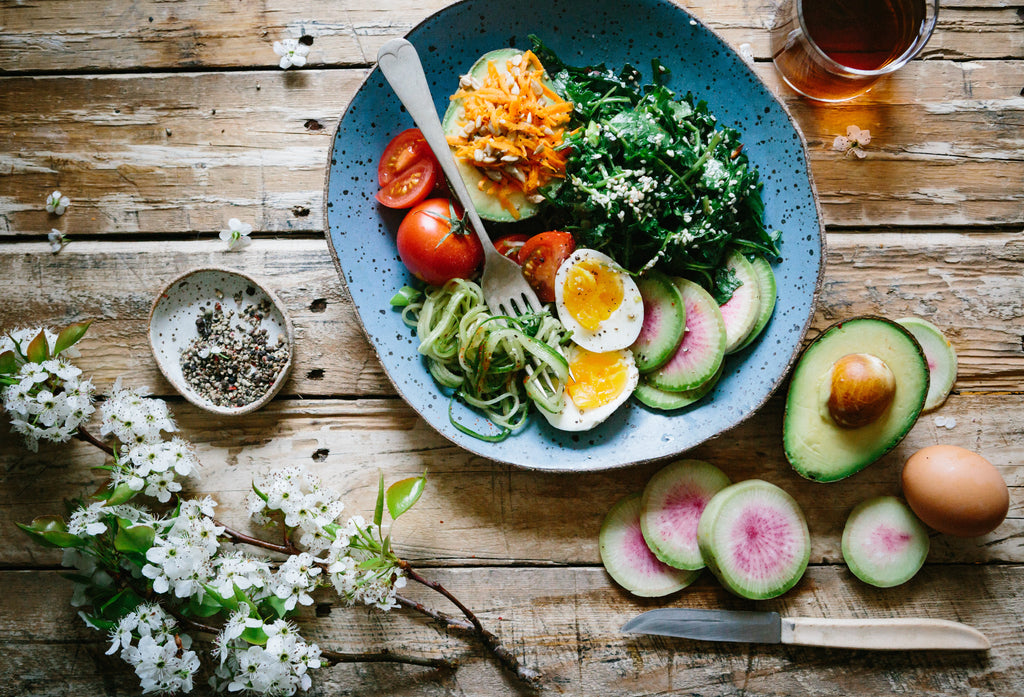By Elana Amsterdam
September 14, 2015
Paleo versus Gluten Free
The Paleo diet is named after Paleolithic times, when people were hunter-gatherers. This was thousands of years ago, long before people cultivated rice, wheat and other crops. The idea behind the diet is that it works because it is possible that our genes may not have adapted to cope with the cultivated crops of “modern” agriculture.
Although the diet of our Paleolithic ancestors couldn’t be simpler, the differences between the Paleo diet and the gluten-free diet can be confusing. In short, everything that is Paleo is acceptable on a gluten-free diet. However, not everything that is gluten free is permitted on the Paleo diet. That makes the Paleo diet more restrictive than the gluten-free diet.
A Paleo diet generally allows vegetables, fruits, meat, seafood, nuts and seeds, and does not permit grains, dairy, legumes and certain vegetable oils (such as soy, cottonseed and corn). The diet also encourages local and organic produce and pasture-raised meats. Some proponents avoid starchy vegetables, such as potatoes.
While whole grains, including gluten-free whole grains, are widely accepted as healthy and beneficial, some people, both with celiac disease and without, feel better when they avoid these grains. There are some concerns that the Paleo diet is lacking in fiber, calcium and vitamin D and may contain too much fat. But you can take steps to address these issues.
Vegetables provide fiber and protein, and the calcium and vitamin D usually supplied by dairy foods comes from increasing the amount, for example, of broccoli, cooked kale and collard greens and almonds you eat. With an emphasis on healthy lean meats and non-starchy vegetables, the diet differs from other low-carb plans that include too much fat and not enough protein and vegetables.
Paleo popularity
The Paleo diet has been growing in popularity, and many consider it a fad. But the first mainstream article on the diet, Paleolithic Nutrition by S. Boyd Eaton M.D., was published in 1985 in the respected New England Journal of Medicine.
In 2002, Loren Cordain, Ph.D., wrote The Paleo Diet, which is considered the bible of Paleo eating. By then I had already learned about this grain-free diet and had been following a strict version for about a year.
The gluten-free diet was not working for me, although I followed it religiously. Consequently, I wondered if I had refractory celiac disease, which does not respond to the gluten-free diet. As a mom of a newborn and a toddler, I needed a dietary solution that actually worked.
I have found that eliminating processed foods (think junk food) as well as grains, grasses and tubers has corrected a gut disorder that the gluten-free diet alone did little to resolve. After two months of eating like a caveman — for me that meant a very simple plant-based diet of vegetables along with animal protein — my gut began to heal. I started to feel more energetic.
I stayed on the strict Paleo diet for approximately five years. Then I expanded my dietary horizons to include treats such as chocolate. However, I remain “grain free” to this day. I also do not drink any alcohol, which is also generally avoided on the Paleo diet.
Paleo debate
There is great debate within the Paleo community about which foods are Paleo and which are not. For example, in his book, Cordain says bacon is a food to avoid, but most Paleo chefs rely heavily on it.
Although Cordain also says starchy vegetables such as potatoes, sweet potatoes, yams and tapioca are to be avoided, most Paleo followers eat these foods regularly and consider tubers to be Paleo. I don’t eat these vegetables simply because I feel sick when I do.
One of the first things you have to recognize when you follow the Paleo diet is that there are many versions, and you have to make some decisions for yourself as you go along. But there’s universal agreement that vegetables, fruits and lean meats are indeed Paleo. A diet of vegetables and animal protein is where many Paleo followers begin, and it’s the diet recommended by Cordain.
There’s no reason to make Paleo overly complicated. In fact, the Paleo diet owes its growing popularity to its emphasis on simple food. My new book, Paleo Cooking from Elana’s Pantry, made the New York Times bestseller list in July 2013, and I find it interesting that on every stop of my book tour I’m asked, “Why is the Paleo diet the best diet?”
To be candid, I reply that it is not. The Paleo diet is what works for me, and these are the foods I serve my family for dinner each night because they are nutrient dense. Everyone eats a Paleo dinner because I only want to prepare one meal, but when my husband is at work and my sons are at school, they eat other foods as well.
This diet is perfect for me; but we all have to figure out which foods work best for our unique systems. There’s no such thing as a “one size fits all” diet.











